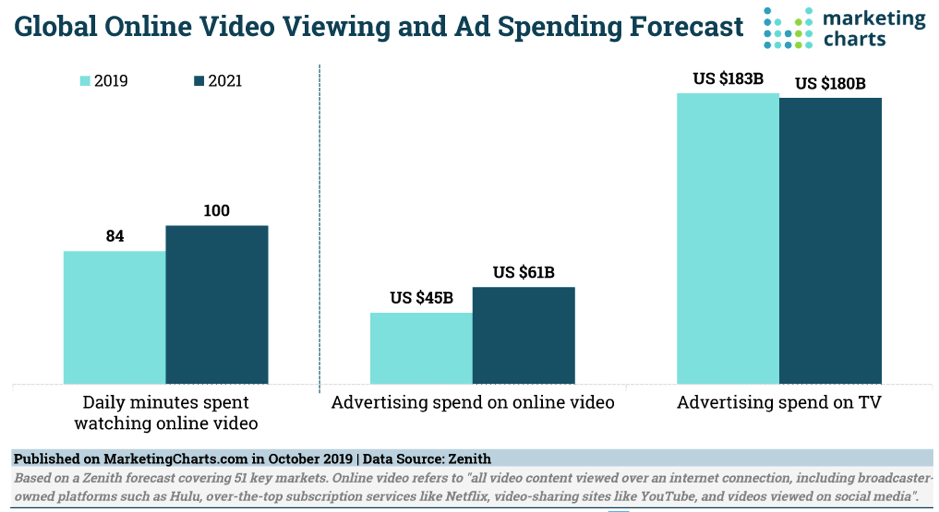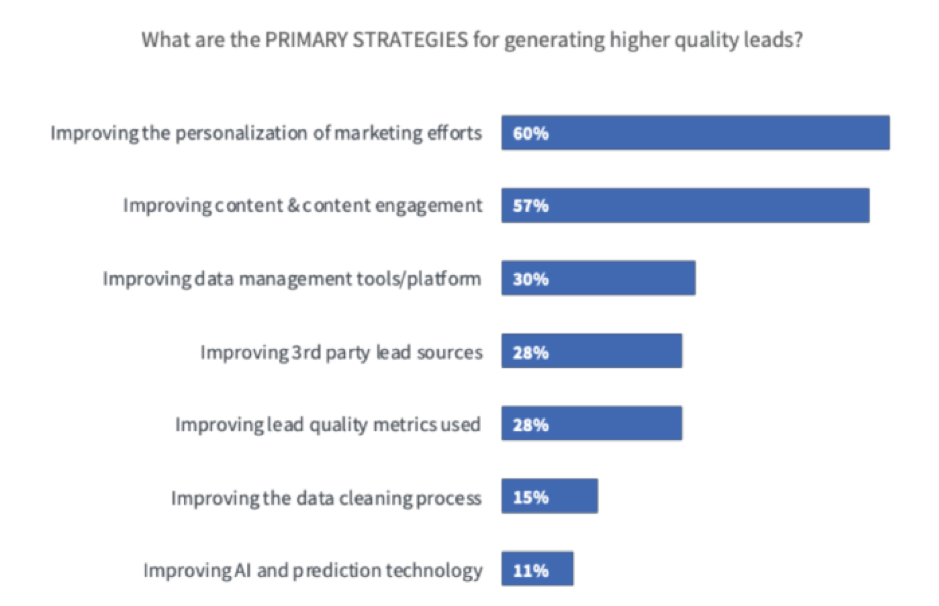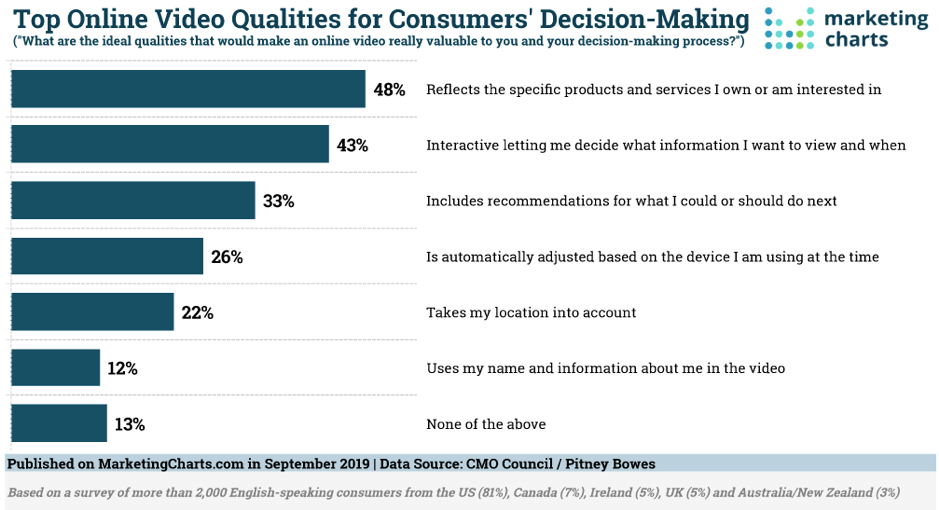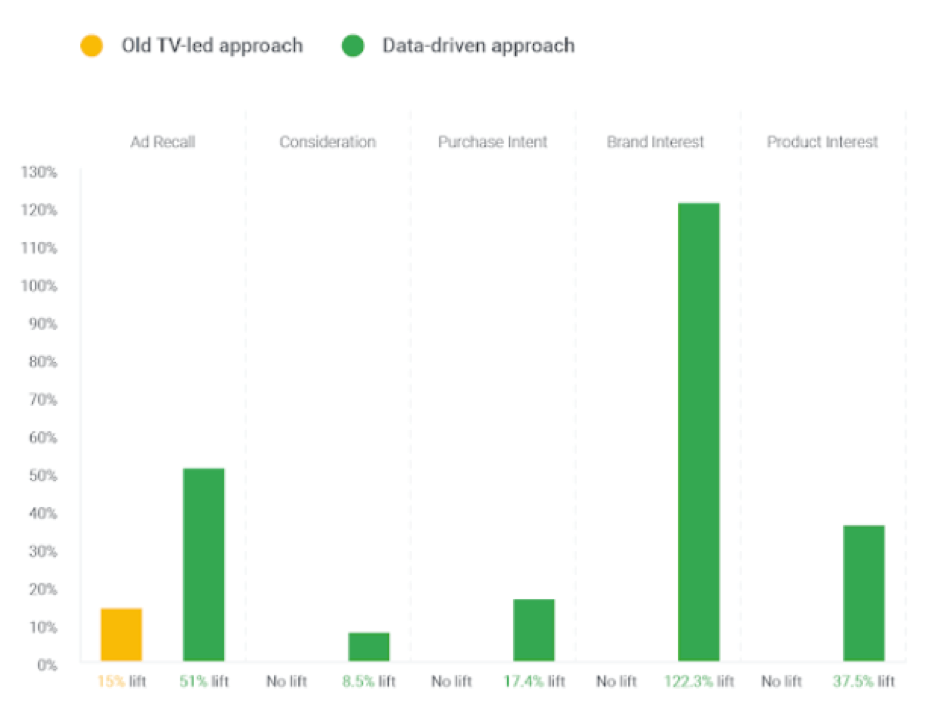Find out what video marketing trends you need to be aware of for 2020 in order to better shape your digital marketing strategy and deliver results.
Social media, the rise of Stories and the way in which people consume media have all contributed to making video more important than ever before, meaning it pays to be aware of the video marketing trends for 2020. In fact, 83% of marketers believe that video is becoming increasingly important, which signals the start of more brands using them as part of their digital marketing strategies.
It is estimated that people will spend more daily minutes watching video over the next few years than ever before, resulting in more advertisers investing in online video ads in order to drive engagement.

While this is great for those who produce videos, it also shows that soon you will have more competition in this area than ever before. Just as the increased use of email as a marketing channel is making it harder to be seen in crowded inboxes, as well as be viewed as useful to customers, marketers will likely struggle to get engagement from videos as the industry becomes saturated.
This means it is vital that marketers stay ahead of the competition in order to deliver the next big video type at the right time. Ensuring you use the latest techniques or focus on the right areas can help you continue to see returns from your video content.
To this end, we’ve taken a look at some of the big video marketing trends for 2020, which you can use to inform your digital marketing strategy. Here are some of the trends that we and industry experts believe you should be taking into account ahead of the new year:
Personalized videos
Personalization is a huge buzzword right now and is something that marketers not only need to take seriously but also need to get right. Not only do 72% of consumers say they will now only engage with marketing messages that are personalized, 60% of marketers consider personalization to be a key strategy for improving the quality of their leads.

Beyond these statistics, personalization across marketing allows you to build a relationship with your audience by providing them with experiences that are tailored to them. This helps you to stand out from the crowd, giving consumers a reason to purchase and addressing their requirements and pain points.
Through personalization, you’re able to provide highly targeted solutions to consumers’ needs, effectively saving them time when it comes to searching for those solutions and making a purchase decision. You’ll also become a lot more memorable, which is important as more than 90% of consumers are more likely to shop brands who they recognize and who provide relevant offers and recommendations.
On top of this, 48% of consumers say that they want videos to reflect the products/services they’re interested in when it comes to informing their decision making. Interestingly, a further 43% said they want videos to be interactive in order to allow them to decide what information they want to view and when, which could be the next step to video personalization.

While personalized videos have been around for a few years – much like website personalization – the increased importance being placed on personalization as a whole by consumers means that it is likely to take off in 2020 and for good reason.
Brands that have used personalization in the past have seen great results, such as Cadbury, which launched a personalized video back in 2014. This video incorporated viewers’ own content (once they had agreed to connect with the brand) to automatically generate a video that spoke directly to them. This campaign resulted in a click-through rate of 65% and a conversion rate of 33.6%. While this is an older example, it still shows the power that personalization within video can have.
“Personalized video is an under-utilized tool and worth testing. From our experience, campaigns frequently generate 50%+ email open rates and 40%+ CTRs. The results speak for themselves.”
Jon Mowat – Author and MD of Hurricane.
A data-first approach
As we’re seeing across marketing as a whole, the one-size-fits-all approach is no longer delivering. A data-first approach can ensure you’re targeting the right audience with the right messaging at the right time in order to increase engagement and conversion. This is why this approach is going to be applied more to video marketing in 2020.
This approach gives brands a better understanding of what works when it comes to their videos, including the best platform, who they need to target and the content of their videos – among other factors. This information can be hugely beneficial when it comes to returns, improving your video marketing ROI.
A number of big brands are now using data to drive video creative and it is paying dividends. PepsiCo is one example of data-driven video marketing delivering results. The company wanted to re-stage the brand Quaker in the UK and used data to inform its video content, resulting in a sales lift of 4.25%. This was 2x the uplift seen with their generic approach.

Looking at data provides insights that can be acted on to inform your media production and improve the effectiveness of your creative. The data-driven approach isn’t about reducing the creativity of your marketing efforts, it just helps to provide focus, such as audience segmentation and personalization.
“I think we’ll see more brands embracing the need to create bespoke video content based on data and insights and move away from a ‘one size fits all’ approach to video. There are a few brands doing this really well, like PepsiCo UK, and a generic approach to video has been notoriously hard to measure in terms of uplift – data-driven creative gives brands the opportunity to understand the kind of messaging that works best against different audiences and move away from making assumptions based on a broad targeting approach.
The number of targeting options available on Google, Facebook, Twitter etc are screaming out to be used in line with a creative approach, whether it’s creating content for a specific target audience or looking to capture attention at different stages of the buying cycle.”
James Bryant, Video Strategy Director at Skeleton Productions.
Long-form videos
We’ve all heard repeatedly that the human attention span is shrinking and is now shorter than that of a goldfish – even though a study disproved this fact a few years ago. This has resulted in many marketers falling back on short-form videos in a bid to inspire greater engagement, but this looks set to change in 2020.
While there’s no denying that shorter videos are easy to consume, especially on the go and via social media, they fail to allow brands to form the emotional connection that makes them memorable to consumers.
In 2017, around 80% of videos were under five minutes in length, however, these short videos tended to drive less than a third of overall engagement in video content. In comparison, videos that were 15 minutes or longer resulted in 50% of audience engagement.

These statistics combined with the fact that the average user will spend 88% more time on a website with video content goes to show that long-form videos can help keep people interested in your message and your brand. Long-form videos enable you to tell a story that can make you memorable, as well as help educate your audience – whether about your products or your brand values.
“Many of us are still under the impression that videos should be quickly digestible—that with all the other content competing for your interest on social media, marketing videos should last no more than 30 seconds to one minute. However, consumers still have a hunger for stories, and marketers can satisfy their need with creative, narrative, long-form content that exceeds five minutes in duration.
“The rise of long-form video content is one of the key changes we expect to see in 2020. The designer outdoor clothing brand Patagonia has already proven that brands can succeed if they do this well. Their video marketing has recently included long-form documentaries exploring real people who are connected to nature—trail runners living in isolation, for instance, and environmentalists trying to protect one of the last remaining old-growth rainforests. The videos are cinematic and engaging.
“Memorable, emotive, long-form video content like this gives brands the opportunity to connect with their consumers on a more emotional level via stories that have a human interest.”
Daniel Sarath, Senior Digital PR Executive at Click Consult.
360-degree videos
Smart devices and VR headsets, such as the Oculus Rift, are making 360-degree videos a lot more accessible. As a result, people are more likely to view a 360-degree video than the same video in a traditional format, with Magnifyre finding that 29% more people opt for the 360-degree option.
This form of video also drives a 7% higher purchase intent while simultaneously helping brands stand out from the crowd, as they result in a 12% increase in the belief that the brand is telling a unique story. This means that 360-degree videos can help deliver greater ROI than traditional video formats while also increasing brand awareness and engagement.
One brand that saw great results from a 360-degree video was Kit Kat, which used the format to showcase its matcha chocolate bar. The YouTube campaign resulted in a completion rate that was more than double the average on the video platform. It also managed to deliver an impressive 35% increase in consideration and a 100% rise in ad recall.
It’s no wonder then that 360-degree videos are bound to become a more popular option in 2020. Brands are more likely to embrace the immersive experience they offer in a bid to tell stories and gain engagement.
“One trend that is definitely on the rise and sure to be a stand-out is 360-degree filming. A controlled perspective allows for a more immersive interactive experience for the consumer. This will also be pushed along with the help of VR, which has already taken the gaming industry by storm, and AR.
“Allowing people to buy into the experience, it’s an effective way to increase video counts, longer watch times and retain customer attention whilst they navigate through the AR world and also build brand awareness.
“Virtual reality is also a great way for a customer to be taken on a journey that may not necessarily be accessible to them otherwise. Putting the customer as the focus of the story while offering unique experiences such as behind the scenes action and access all areas means brands can benefit from showing off their personality.”
Sophie Campbell, Digital Marketing Executive at Click Consult.
Integration across the marketing funnel
Considering the fact that video is a powerful content type when it comes to encouraging certain behaviours in your audience, it’s surprising that many marketers are still viewing it as a “nice-to-have” tool rather than a necessity. This means that many strategies are failing to make videos work as hard as they could be. This is why in 2020 brands are more likely to start integrating video across their entire marketing funnels.
As videos are such a hardworking form of content, using them at different stages of your marketing funnel and across different channels can help make the customer journey smoother and shorter.
From videos that explain brand values to those that provide more details on products or services, people prefer to watch videos where possible, with 72% of people preferring to learn about a company via video rather than text.

Videos at the brand awareness stage can help drive people to your website, with 53% of consumers engaging with a brand after viewing one of their videos on social media. They are also beneficial through the nurturing stage, especially within emails, as they can help to increase the click-through rate by up to 300%.
Videos can serve as an interesting and highly engaging way of addressing pain points, providing customer support and helping leads convert to customers, so it’s no wonder that the next year will see them popping up through brands’ marketing funnels.
“Video is the most effective way for brands to elicit behaviour change in consumers and reach their goals, so it’s no surprise that it’s a big priority for marketers in 2020.
“For me, the real challenge for marketers now is to truly integrate video into each stage of the funnel so that it’s working harder. Video cannot be a nice-to-have or an add-on but needs to be fully integrated into the wider brand strategy and analyzed using appropriate metrics.”
Jon Mowat – Author and MD of Hurricane.
Final thoughts
Videos offer consumers content that can be quickly and easily digested across a high number of channels. From B2C and B2B perspectives, they are effective at answering questions, giving information and creating relationships, making them a must-have for your digital marketing strategy.
However, it is no longer enough to simply create a short video for social media, you need to ensure you’re using videos across your marketing funnel, as well as making use of the latest video formats and techniques in order to remain competitive.
It’s worth noting that while previously companies have struggled with the cost of creating videos, but now that they are becoming such a popular content type that they are more accessible for brands than ever before. This ultimately means that failing to utilize videos could leave you far behind your competitors.
If you want to keep on top of all the digital marketing trends for 2020, take a look at our other resources. We’re looking at various forms of marketing to ensure that your strategy for the next year is as up-to-date and effective as possible.

